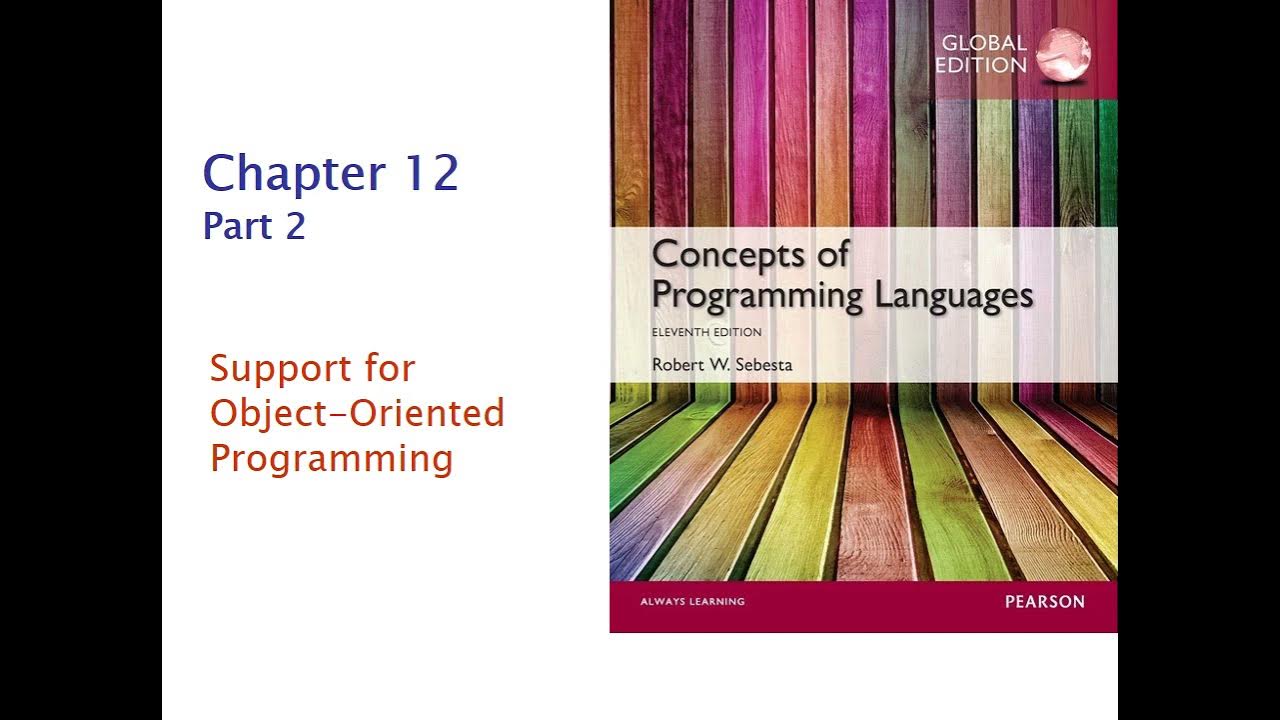Lec 2: What is Object Oriented Programming (OOP) | POP vs OOP | C++ Tutorials for Beginners
Summary
TLDRThis video explains the fundamental differences between Object-Oriented Programming (OOP) and Procedural-Oriented Programming (POP), with a focus on C++. It covers key OOP concepts like encapsulation, inheritance, and polymorphism, emphasizing data security and reusability. The video also highlights how OOP is better suited for large-scale applications by modeling real-world entities as objects. While procedural programming focuses on algorithms, OOP encapsulates data and methods, improving scalability and security. The tutorial provides foundational knowledge and prepares learners for more advanced topics in OOP, making complex programming tasks more manageable.
Takeaways
- 😀 C++ is an object-oriented programming (OOP) language that combines both procedural and object-oriented features, but is not purely object-oriented.
- 😀 OOP focuses on objects, which encapsulate data (attributes) and behavior (functions), whereas procedural programming (POP) revolves around functions and global data.
- 😀 OOP emphasizes data security by encapsulating data within objects and controlling access via access specifiers like private, public, and protected.
- 😀 POP is procedure-oriented, where the main focus is on algorithms and how tasks are performed, but it has limited scalability and lacks data security.
- 😀 Data in OOP is less exposed and accessed through controlled message passing between objects, reducing the risk of unauthorized modifications.
- 😀 In OOP, real-world entities are represented as objects, making it easier to model complex systems such as hospital management or e-commerce platforms.
- 😀 OOP's structure improves security and scalability, making it ideal for large, complex, and maintainable applications.
- 😀 The main pillars of OOP—abstraction, encapsulation, inheritance, and polymorphism—enhance modularity, data protection, and reusability of code.
- 😀 C++ allows for a blend of procedural and object-oriented paradigms, providing flexibility in choosing the right approach for different types of problems.
- 😀 OOP makes it easier to manage large codebases by organizing data and functions into objects, promoting reusability and simplifying maintenance over time.
Q & A
What is Object-Oriented Programming (OOP)?
-Object-Oriented Programming (OOP) is a programming paradigm that focuses on organizing data and behavior into units called objects. Each object encapsulates its own data (attributes) and functions (methods) and can interact with other objects through message passing.
What is the difference between Procedure-Oriented Programming (POP) and Object-Oriented Programming (OOP)?
-The primary difference between POP and OOP is that in POP, the focus is on algorithms and functions, with data being more freely shared among them. In OOP, the focus shifts to encapsulating data within objects and using functions (methods) to interact with the data, providing better security and organization.
Why is data security a concern in Procedure-Oriented Programming (POP)?
-In POP, functions have access to global data, which can lead to data being modified unexpectedly. This makes the data less secure because any function can change the global state, potentially leading to errors or inconsistent results.
How does Object-Oriented Programming (OOP) address the data security issue?
-OOP addresses data security by encapsulating data within objects and providing access specifiers like 'private', 'protected', and 'public'. These access control mechanisms restrict who can access or modify the data, thereby enhancing security.
What are some of the benefits of Object-Oriented Programming (OOP)?
-Some benefits of OOP include improved data security, better organization of code through classes and objects, scalability for large applications, and reusability of code through inheritance. OOP also promotes modular design, which makes maintenance and updates easier.
What is the role of classes and objects in OOP?
-In OOP, a class is a blueprint that defines the structure and behavior of objects. An object is an instance of a class, representing a real-world entity with its own data (attributes) and methods (behavior). Classes allow for code reuse and modularity, while objects represent specific entities within a program.
What is inheritance in OOP, and how does it improve productivity?
-Inheritance is a mechanism in OOP that allows one class to inherit properties and behaviors from another class. This enables code reuse, reducing the need to write the same code multiple times, and improves productivity by simplifying development and maintenance.
What are the four pillars of Object-Oriented Programming (OOP)?
-The four pillars of OOP are abstraction, encapsulation, inheritance, and polymorphism. These principles help in organizing and structuring code in a way that is more efficient, secure, and easier to maintain.
What is encapsulation in OOP?
-Encapsulation is the concept of bundling the data (attributes) and methods (functions) that operate on the data into a single unit, i.e., an object. It also involves restricting direct access to some of the object's components, which helps protect the integrity of the data.
Why is OOP better suited for large-scale applications compared to POP?
-OOP is better suited for large-scale applications because it promotes modularity, data security, and easier maintenance. Its focus on objects and encapsulation helps manage complex systems with less interdependency between code components, making scalability and updates more efficient.
Outlines

This section is available to paid users only. Please upgrade to access this part.
Upgrade NowMindmap

This section is available to paid users only. Please upgrade to access this part.
Upgrade NowKeywords

This section is available to paid users only. Please upgrade to access this part.
Upgrade NowHighlights

This section is available to paid users only. Please upgrade to access this part.
Upgrade NowTranscripts

This section is available to paid users only. Please upgrade to access this part.
Upgrade Now5.0 / 5 (0 votes)





